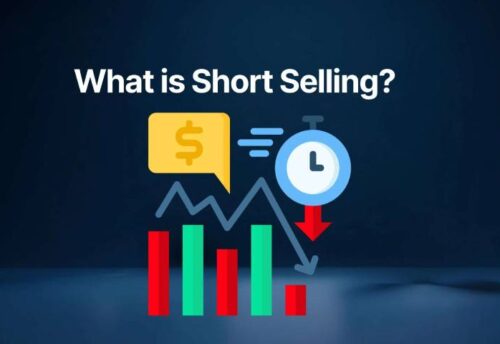
- 05/11/2025
- MyFinanceGyan
- 94 Views
- 0 Likes
- Share Market
Understanding Historic Pricing: A Comprehensive Guide
In the complex world of finance and trading, historic pricing plays a critical role in understanding how assets have behaved over time. Whether analyzing stocks, mutual funds, commodities, or currencies, historic price data serves as a window into market behavior — offering insights that help investors, traders, and businesses make smarter, data-driven decisions.
This comprehensive guide explains what historic pricing is, how it works, its significance, applications across sectors, key limitations, and how both investors and businesses can use it to improve performance and strategy.
What is Historic Pricing?
Historic pricing refers to the recorded past prices of a financial asset at specific time intervals.
These records include opening, closing, high, and low prices for various time frames — daily, weekly, monthly, or even intraday.
In the context of mutual funds, the term has a slightly different meaning. It refers to valuing a fund’s Net Asset Value (NAV) based on the last known valuation point (the “historic” or “previous” price). Mutual funds typically calculate NAV once at the end of each trading day, meaning all buy and sell orders are processed at that day’s closing value.
Key Highlights of Historic Pricing:
- Reflects past performance of an asset.
- Provides the basis for calculating returns over time.
- Helps in identifying price trends and patterns.
- Supports technical analysis and valuation models.
- Differs from real-time pricing, which reflects current market values.
Why Is Historic Pricing Important?
Historic pricing data forms the foundation for many critical financial analyses and investment decisions. Below are the key reasons it matters:
- Identifying Market Trends and Patterns: By studying historical prices, traders can recognize long-term trends — such as bull or bear phases — and recurring market cycles. Market psychology often repeats, making trend identification vital for predicting possible future movements.
- Technical Analysis: Technical indicators such as Moving Averages, RSI, MACD, and Bollinger Bands rely entirely on historic price data. Chart patterns like head and shoulders, double tops, or triangles are formed by analyzing previous price behavior, helping traders generate reliable buy or sell signals.
- Asset Valuation: Mutual funds and institutional investors use historic pricing to calculate accurate valuations. For example, NAV calculation in mutual funds is based on historic data to ensure consistency and fairness in pricing for investors.
- Risk Management: Historic price movements reveal volatility, drawdowns, and risk exposure. This data allows portfolio managers to set appropriate stop-loss limits, determine position sizes, and build more resilient portfolios.
- Forecasting and Strategy Backtesting: Historic data allows traders to backtest trading strategies — testing how a system would have performed in the past before using it in live markets. This process refines strategy design and improves risk-reward accuracy.
Historic Pricing vs. Real-Time Pricing:
Practical Applications of Historic Pricing:
- In Equity Markets: Historic charts show how a stock performed over time, enabling investors to identify growth phases, cyclical movements, and performance consistency. Long-term investors rely on this data for entry timing and portfolio planning.
- In Mutual Funds: Mutual funds often use historic pricing because NAVs are calculated only once per day — after markets close. Investors buying or redeeming shares do so at the NAV of that valuation day, which is based on past prices.
- In Commodities and Forex: Historic pricing helps identify seasonal trends (e.g., crude oil demand rising in winter) and understand how geopolitical events have historically influenced prices.
- In Business Pricing Strategies: Businesses analyze historic price and sales data to improve pricing models.
Example: A retailer studies five years of pricing and sales data to identify demand patterns — discovering that winter wear sells best in November–December. They then time promotions accordingly to maximize profit and optimize inventory.
How to Access and Use Historic Price Data?
Reliable Data Sources:
- Financial portals: Yahoo Finance, Google Finance, Bloomberg
- Brokerage trading platforms with historical charting tools
- Exchange websites (e.g., NSE, BSE, NYSE, CME)
- Professional data providers: Reuters, FactSet, Morningstar
How to Analyze the Data?
- Plot prices on charts to visualize trends.
- Apply technical indicators (RSI, MACD, Moving Averages).
- Measure volatility, returns, and correlations.
- Backtest trading systems using historical datasets.
Decision-Making Applications:
- Identify entry and exit points.
- Plan portfolio rebalancing.
- Set price targets and stop-losses.
- Forecast demand and inventory cycles for businesses.
Limitations of Historic Pricing:
Despite its value, historic pricing has certain constraints:
- Past Performance ≠ Future Outcomes: Historical trends may not always repeat due to changing economic or political conditions.
- Dynamic Market Conditions: Economic crises, new policies, or global events can render old data less relevant.
- Lack of Context: Historic prices don’t include sentiment, news impact, or sudden external shocks.
- Stale Pricing Risk: Particularly in mutual funds, where prices reflect the previous day’s NAV, not the current market situation.
Best Practice: Combine historic pricing with real-time data, fundamental analysis, and market sentiment for well-rounded decisions.
Case Studies: How Historic Pricing Is Used
- Case 1: Retailer Optimizing Seasonal Discounts: A fashion retailer uses five years of historic pricing and sales data to determine demand peaks. They discover that winter coats sell best from November to December. Using this insight, the retailer schedules promotions and manages stock efficiently, increasing profits.
- Case 2: Airline Competitive Fare Analysis: An airline reviews historic ticket prices of competitors across major routes. By analyzing previous fare hikes and reductions, it adjusts pricing dynamically to remain competitive while maintaining profit margins.
- Case 3: Mutual Fund NAV Valuation: Mutual fund investors rely on historic NAV pricing for buying and redeeming units. Although this method introduces slight lag risk, it ensures consistency and prevents market noise from affecting valuations during trading hours.
Leveraging Historic Pricing for Smarter Business Decisions:
Businesses and investors can gain significant advantages by applying insights from historic price trends:
- Market segmentation: Group customers based on past buying responses.
- Price sensitivity analysis: Identify how demand fluctuates with pricing changes.
- Promotion planning: Time discounts during low-demand cycles.
- Product mix optimization: Focus on consistently profitable products.
Summary and Final Thoughts:
Historic pricing serves as the foundation for understanding market behavior, evaluating investment opportunities, and crafting effective pricing strategies.
By providing a record of how assets and products have performed over time, it empowers:
- Traders to time entries and exits more effectively.
- Investors to value assets and assess risks accurately.
- Businesses to develop data-driven pricing and marketing models.
However, it’s vital to remember that historic data is a guide, not a guarantee. Markets evolve, and conditions change — so combining past insights with real-time analytics ensures smarter and more adaptive decision-making.
In the world of finance and commerce, leveraging historic pricing wisely is key to turning past data into future success.
Disclaimer:
The views expressed in this article are personal and intended solely for educational and awareness purposes. They should not be treated as investment or product recommendations.



